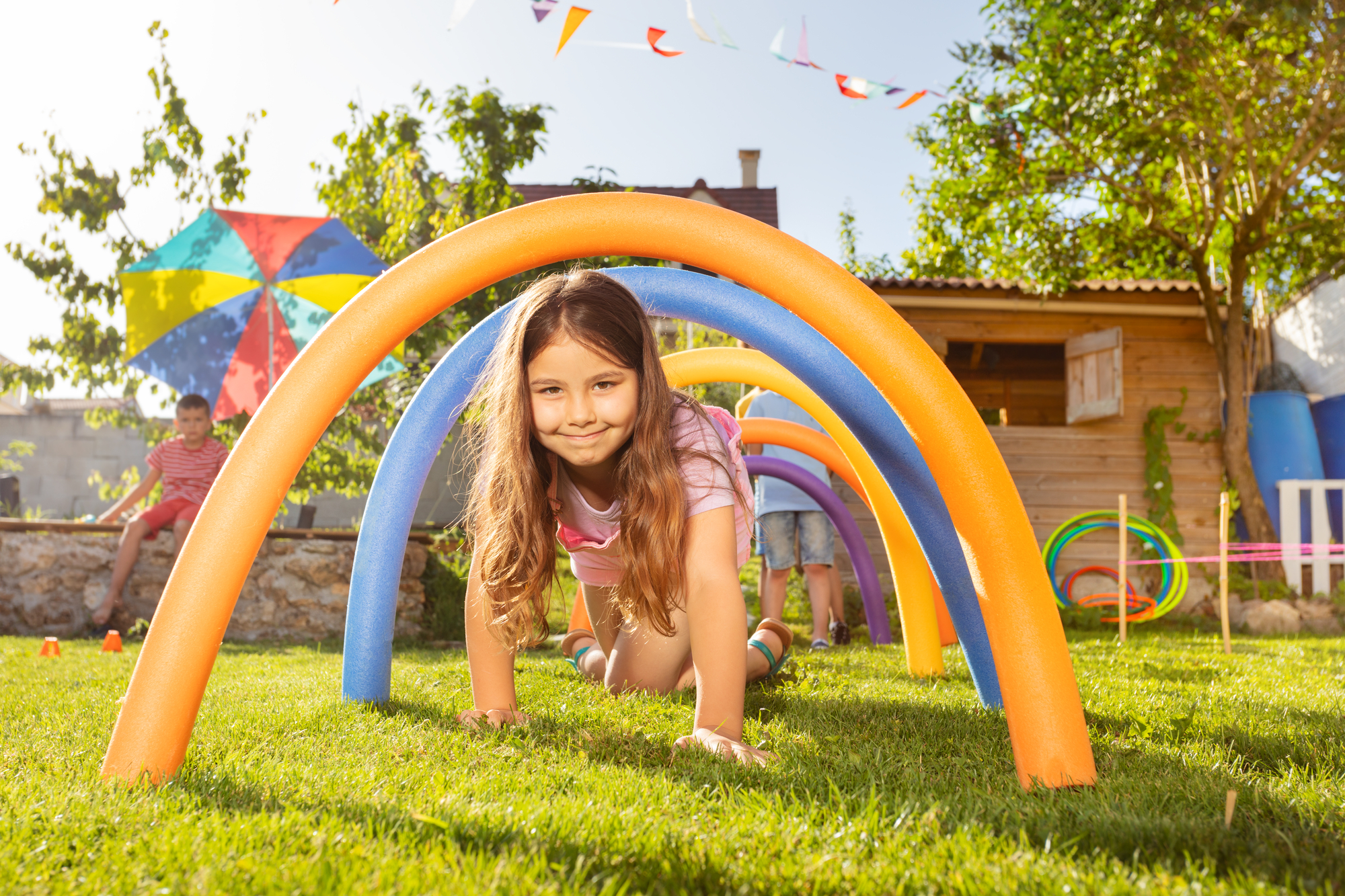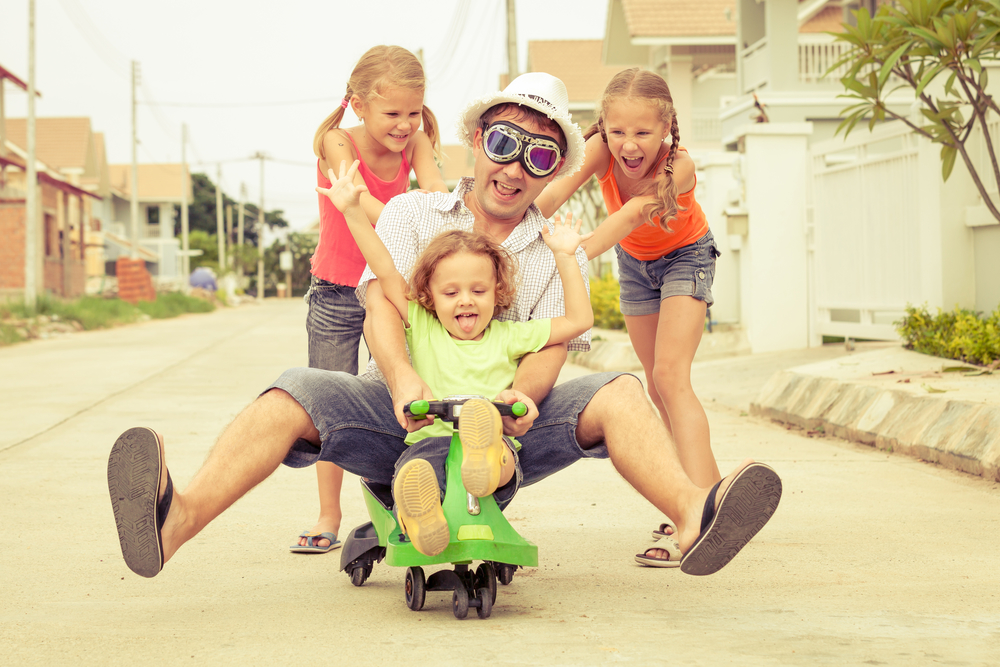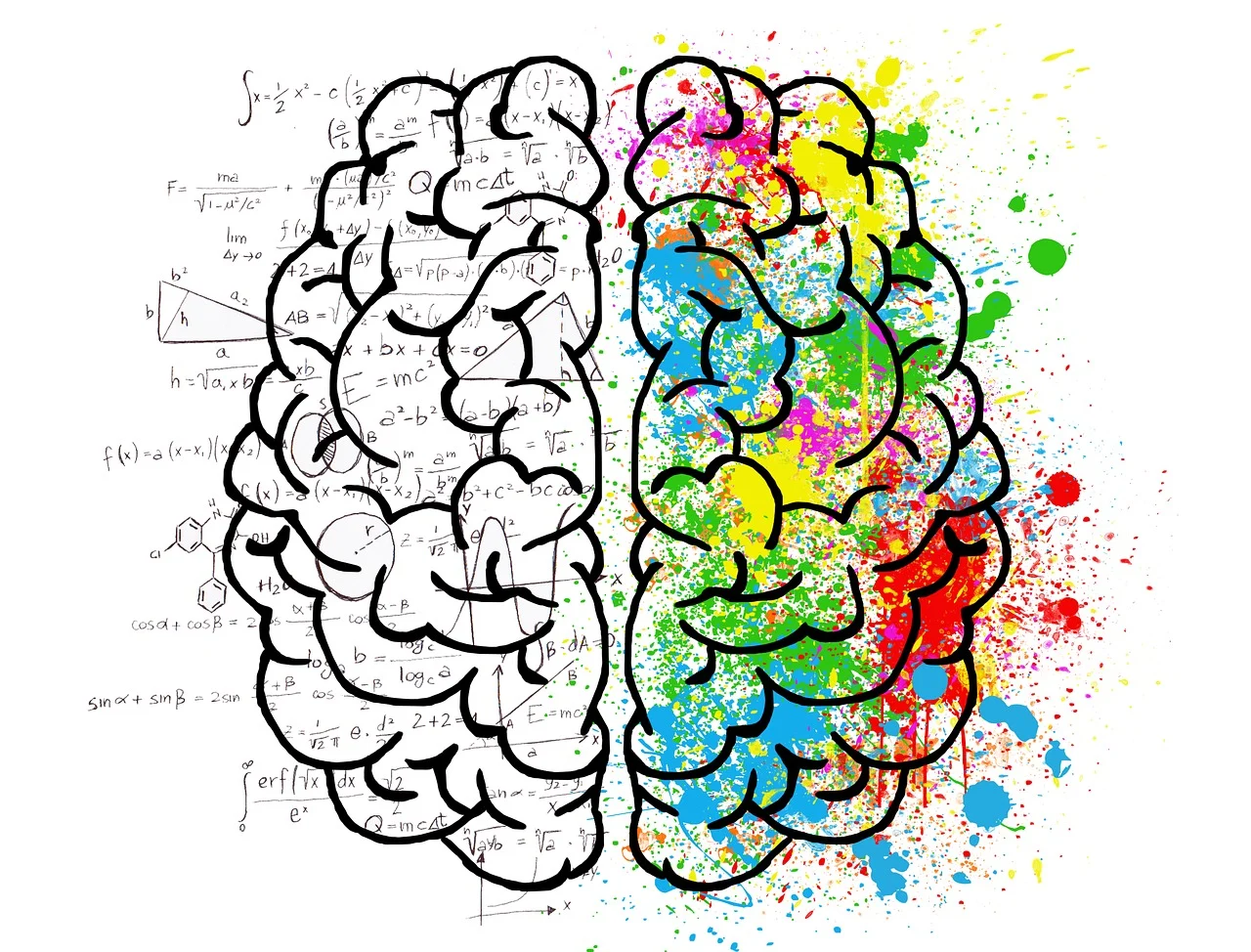Before my parents were up on weekend mornings, my siblings and I sailed pirate ships and fought off savage monsters, including the bane of Captain Hook’s life, the terrifying ticking crocodile. Our boat, a candlewick bedspread, was spanned and tucked between two single beds. It took gymnastic craft to keep the boat intact as three of us clambered in and out, imperiously ordering some villain to ‘walk the plank’.
My parents valued play. When my mum heard about the pirates, she offered scarves and carboard tubes for telescopes, helped us make eye patches and gave us paints to decorate them.
We were all sporty and over the years, my dad added structures in the garden. We had horizontal bars at two heights, one so high it would rightly make modern parents blanch. We scaled them, hanging, swinging and spinning like whirligigs.
Research indicates that healthy permanent networks are formed in rich stimulating environments. What you provide within your wonderfully diverse family, is important for children’s healthy growth and brain development. And because play is so absorbing to children it is invaluable for learning.
But, as the descriptions above suggest, adults have a significant role resourcing play and adapting it as children grow.
Very young children focus on their own activity or play in parallel beside their peers. Later they develop interactive play. All play educates. It might be simple sensory learning, seeing that things topple over when pushed, or spill if not carried correctly. But the real gold is in social play.
Social play can be free play, without any involvement of adults, mediated play, where adults get intermittently and intentionally involved, or directed play, where adults take the lead. All of these are valuable.
In free play, children utilise their current knowledge and learn from their friends. They collaborate, negotiate, plan and enact ideas.
In mediated or directed play, an adult provides vocabulary, information, equipment and suggestions to raise complexity and understanding. Reading to children fuels play. Board, card or formal games like hide-and-seek teach a range of skills like attention and self-regulation.
Play elevates emotional intelligence because children learn how what they say and do affects others’ moods and emotions. Play is a safe space to practice skills and explore roles. It’s wonderful to be the bossy boots when you’re normally shy or feel what it’s like to move like a cat, all feline and furry. My daughter nearly resigned from kindergarten when she was cast in a play as a dog, not a cat. It was a tempestuous day, with a lot of foot-stamping and tears. After strong negotiation, she got her whiskery wish. She’s a qualified vet today!
Play is excellent for building knowledge about how the world works. Pouring water ‘tea’ improves fine motor skills at the same time as forming one’s identity as an attentive host. I recently watched in awe as two four-year-old boys carried baby dolls in exactly the right parental posture and gently put them down for their nap. That was just before they morphed into Jedi knights wielding lightsabres!
Here are four ways to provide play that also encourages learning.
Maths sorting fun
You may have inherited a tin of buttons from your grandmother. Any collection of small items offers a fun way to learn maths. Ask your child to explain his or her choices when placing items in groups. The sorting can be based on simple criteria like colour, size and shape, but also encourage exploration of texture, width, height and number. It’s excellent for fine-motor planning whilst emphasising analysis and comparison.
Puppetry
Paper bag or sock puppets are an age-old way to tell stories and simple to construct. Naming a puppet, providing a persona and imagining what they’ll get up to are wonderful ways to stimulate language and creativity.
Obstacle course
Design a fun, challenging obstacle course. Get the kids to help you cut holes in boxes, arrange cushions to roll on, tape lines on the floor for distance jumping and select furniture to crawl under. They love timing themselves doing circuits as they exercise their large muscles. And what’s stopping them from graphing the results? Number of circuits against time.
Giant bubbles
Outdoor play with giant bubbles on a day that is not too sunny and the air is still, is something they ask for again and again. There are many recipes for the mix and great ways to make giant wands. Just google giant bubbles! Children need perseverance to master a new skill. And this is one worth the effort. Once you’ve dipped your wand in the mix, hold your arms up and move back at just the right speed to release the iridescent magic.
The value of play cannot be overestimated. Creating an environment where there is a balance between free, mediated and directed play will ensure permanent benefits for your children. Toys alone will not ensure quality learning. Your attention, interest and rich, sustained conversations are infinitely more important.
Lili-Ann Kriegler (B. A Hons, H. Dip. Ed, M.Ed.) is an education consultant and author of Edu-Chameleon. Lili-Ann’s primary specialisations are in early childhood education (birth-9 years), leadership and optimising human thinking and cognition. Her current part-time role is as an education consultant at Independent Schools Victoria and she runs her own consultancy, Kriegler-Education. Find out more at https://kriegler-education.com








